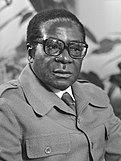From today's featured article
Katana Zero is a 2019 platform game created by the indie developer Justin Stander. The player controls a katana-wielding assassin who can slow down time and predict the future, and must kill all enemies in a level without being hit. The story is told in sequences where the player converses with non-player characters through dialogue trees. Stander began working on Katana Zero in 2013 as his first commercial game. He sought to make a difficult story-driven game that minimized unskippable dialogue and cutscenes. He worked mostly alone during the prolonged development, although he recruited artists to design the visuals, and the musicians Bill Kiley and Thijs "LudoWic" Lodewijk to compose the synthwave soundtrack. Devolver Digital published Katana Zero for macOS, Nintendo Switch, and Windows on April 18, 2019. It sold 500,000 copies in less than a year and received positive reviews for its gameplay, visuals, writing, and music. Other ports are available, and downloadable content is in development. (Full article...)
Did you know ...
- ... that in the 2024 election, Indonesian comedian Komeng (election portrait pictured) received the most votes of any senatorial candidate to date?
- ... that Selected Ambient Works 85–92's audio quality has been described as poor due to being recorded on a cassette damaged by a cat?
- ... that North Dakota state senator Merrill Piepkorn is also a musician, radio host, and public address announcer?
- ... that Cladonota's extravagant dorsal structures have been called both "grotesque" and "particularly charismatic"?
- ... that in opposition to his parents, opera star Joseph Schwarz began his career by running away from home to join a band of traveling minstrels?
- ... that an unusual mountain on Pluto may have once erupted water instead of lava?
- ... that Audrys Nin Reyes is the first male gymnast from the Dominican Republic to qualify for the Olympic Games?
- ... that an abandoned Catholic church in China was used by a party school?
In the news
- The historic Børsen (pictured) in Copenhagen, Denmark, catches fire.
- In retaliation for an Israeli airstrike on the Iranian consulate in Damascus, Iran conducts missile and drone strikes against Israel.
- In the South Korean legislative election, the Democratic Party–led opposition alliance increases its majority in parliament.
- American football Hall of Fame running back, murder suspect and convicted criminal O. J. Simpson dies at the age of 76.
- Simon Harris becomes Taoiseach of Ireland after Leo Varadkar's resignation.
On this day
- 1775 – American Revolutionary War: Colonists Paul Revere and William Dawes, later joined by Samuel Prescott, began a midnight ride to warn residents of Lexington and Concord, Massachusetts, about the impending arrival of British troops.
- 1938 – Superman, created by Jerry Siegel and Joe Shuster of DC Comics, made his debut in Action Comics #1, the first true superhero comic book.
- 1946 – The final session of the League of Nations concluded in Geneva, with delegates agreeing to transfer much of its assets to the United Nations.
- 1980 – Robert Mugabe (pictured) became the first prime minister of Zimbabwe, beginning a 37-year period in power.
- 2007 – A ladle spilled 30 tonnes (33 tons) of molten steel in a factory in Liaoning, China, killing 32 workers.
- Theobald of Bec (d. 1161)
- Clara Elsene Peck (b. 1883)
- Universo 2000 (b. 1963)
Today's featured picture
|
A basso porto (At the Lower Harbour) is an opera in three acts by the Italian composer Niccola Spinelli. The opera sets an Italian-language libretto by Eugene Checchi, based on Goffredo Cognetti's 1889 play O voto. It premiered to critical success at the Cologne Opera on April 18, 1894, sung in a German translation by Ludwig Hartmann and Otto Hess. This watercolour illustration depicts the set design by Riccardo Salvadori for act 1 of the opera's premiere. A basso porto is set in the slums of Naples, and Spinelli included mandolins and guitars in his orchestral score. Set design credit: Riccardo Salvadori
Recently featured:
|




